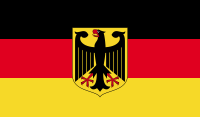What Is NAFTA?
The North American Free Trade Agreement, or NAFTA, is a three-country accord negotiated by the governments of Canada, Mexico, and the United States that entered into force in January 1994. NAFTA’s terms, which were implemented gradually through January 2008, provided for the elimination of most tariffs on products traded among the three countries. Liberalization of trade in agriculture, textiles, and automobile manufacturing was a major focus. The deal also sought to protect intellectual property, establish dispute-resolution mechanisms, and, through side agreements, implement labor and environmental safeguards.
NAFTA fundamentally reshaped North American economic relations, driving an unprecedented integration between Canada and the United States’ developed economies and Mexico, a developing country. NAFTA enjoyed bipartisan backing—it was negotiated by Republican President George H.W. Bush and passed through Congress and implemented under Democratic President Bill Clinton. It encouraged a more than tripling of regional trade and cross-border investment between the three countries also grew significantly.
How has NAFTA affected the U.S. economy?
In the years since NAFTA, U.S. trade with its North American neighbors has more than tripled, growing more rapidly than U.S. trade with the rest of the world. Canada and Mexico are the two largest destinations for U.S. exports, accounting for more than a third of the total.
How has it affected the Mexican economy?
NAFTA gave a major boost to Mexican farm exports to the United States, which have tripled since NAFTA’s implementation. Hundreds of thousands of auto manufacturing jobs have also been created in the country, and most studies have found (PDF) that the pact had a positive impact on Mexican productivity and consumer prices.
The pact was the continuation of a decade of economic liberalization that saw the country transition from one of the world’s most protectionist economies to one of the most open to trade.
Am-mex products & services © 2017.
Created with
by Ryson Studios






